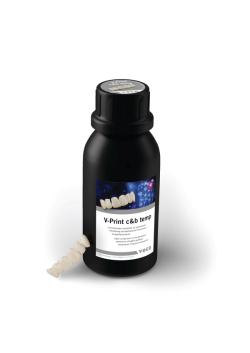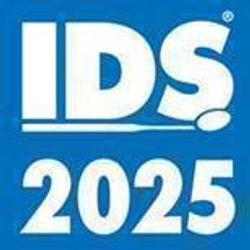- About Us
- Advertise
- Editorial
- Contact Us
- Terms and Conditions
- Privacy Policy
- Do Not Sell My Personal Information
© 2025 MJH Life Sciences™ and Dental Products Report. All rights reserved.
Dental Labs Can Enhance 3D Printing Capabilities with Multi-Material 3D Printing Technology
Here’s why now is a better time than ever for labs to enhance their existing 3D printing capabilities with multi-material printers for the future production needs that the market demands.
The adoption of 3D printing technology within dental labs is maturing rapidly, with an estimated 96% of dental labs with more than 5 employees using 3D printers in their facilities.1 Additionally, this expansion is anticipated to maintain a compound annual growth rate (CAGR) of 26.1 percent from 2023 to 2030.2 The evidence is clear: dental labs have embraced 3D printing as a preferred technology as materials improve.
As demand for dental applications from dental practices continues to grow, labs are considering their options to scale operations to meet the growing demand. They need to ask themselves, what technologies are available? What materials are available? What are the additional use cases for 3D printing? Do they need to grow their headcount?
For labs to scale and grow their 3D print business, they need to also think beyond just single-material dental 3D printers. When these printers were first introduced into the market, labs invested in them to accelerate their production time, increase workflow, and advance their production capabilities. Single-material 3D printers made sense at the time as they met the needs of the dental lab market and enabled them to print numerous parts, such as models, surgical guides, and gingiva masks.
But by continuing to solely rely on single-material 3D printers, over time, more technical labor and maintenance is needed. As market demand continues to increase, so too does the need for additional solutions to complement existing fleets of single-material printers. That is where multi-material 3D printing capabilities come into play.
The Market is Ready for Multi-Material
Dental labs strive to scale part production by optimizing lab resources and consistently maintaining quality and accuracy. Multi-material 3D printing can provide an effective and efficient solution with the simultaneous production of diverse applications, such as: crown & bridge/implant/orthodontic models, surgical guides, gingiva masks and indirect bonding trays. The platform boasts a high-capacity print tray that can fit 16 full implant cases including a model, a surgical guide and the gingiva mask. Multi-material, mixed application printing means there is no need to change materials between runs or post cure the parts when they come off the printer.
Multi-material printing can also be implemented to print full-color parts such as diagnostic dental models or monolithic, highly esthetic dentures. This technology significantly minimizes the need for extensive post-processing by technicians, resulting in a streamlined workflow that effectively boosts production capacity. Additionally, the implementation of multi-material 3D printers contributes to a safer work environment. The printers' enclosed design allows for loading resin cartridges directly into the machine, eliminating the need for operators to handle uncured or hazardous materials during the printing process.
Dental labs have the opportunity to take advantage of new technologies and increase their 3D printing capabilities. They can accelerate their growth potential by going beyond single-material printers (which still have their place in today’s dental labs) and embracing technology that can be used 24 hours a day to create numerous dental applications without increasing overhead. The technologies in today’s multi-material printers increase accuracy, streamline workflow, and increase technicians’ and labs’ productivity, as well as product output and overall quality. Because of these reasons, now is a better time than ever for labs to enhance their existing 3D printing capabilities with multi-material printers for the future production needs that the market demands.
The utilization of multi-material 3D printers brings advantages to both dental labs and their customers. Faster output means faster smiles. And faster smiles means more time to take on new customers and create new smiles.



